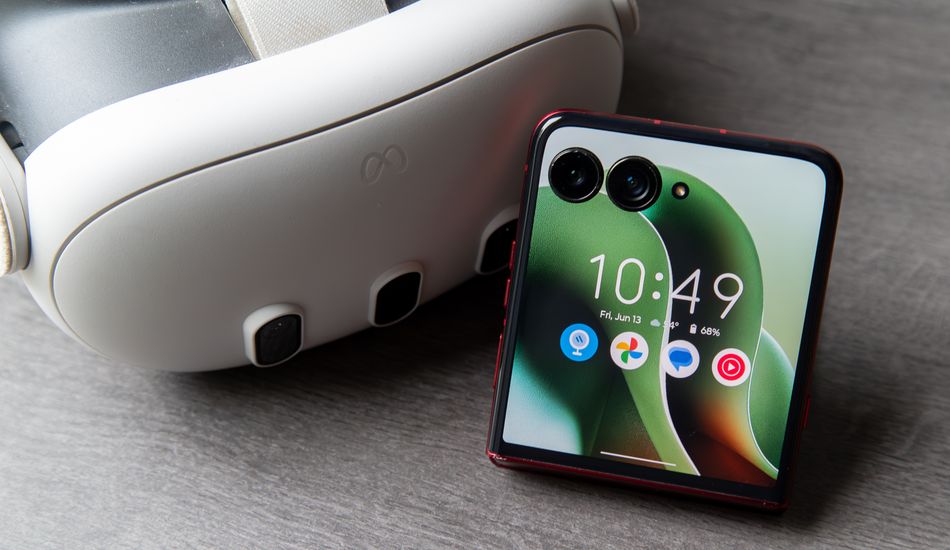
Motorola's Smart Connect: Bridging Mobile and VR on Quest 3
Virtual Reality (VR) offers immersive experiences, yet it often disconnects us from our everyday mobile lives. While innovations like color passthrough on headsets such as the Quest 3 attempt to blend the virtual and real, the limitations become apparent when you glance down, trying to read notifications on your phone.
For those deeply entrenched in the mobile ecosystem, the struggle to juggle VR immersion with the constant stream of information from their smartphones is real. Addressing this challenge, Motorola has introduced Smart Connect, a solution designed to integrate your phone directly into your Quest 3 or 3S VR experience. Although still in its early stages, this innovative approach offers a glimpse into a more connected future.
What Smart Connect Offers
Smart Connect, evolving from Motorola's earlier "Ready For" software, allows users to seamlessly connect their phones to other devices, such as computers and now, VR headsets. It facilitates tasks like viewing apps, sharing media, and even controlling multiple devices with a single input source.
Within the Quest 3 environment, Smart Connect primarily offers two key functions: app streaming and a mobile desktop. The former allows users to stream individual apps from their phone directly into the headset, while the latter creates a desktop-like environment, complete with notifications and windowing capabilities. Imagine being able to respond to a message without ever leaving your VR game.
Setting up Smart Connect
The initial setup is straightforward. After downloading the Smart Connect app from the Horizon Store on your Quest 3 or 3S, you'll be prompted to sync your Motorola phone by scanning a QR code. Once paired, your phone's apps and desktop environment become accessible within your VR headset.
Navigating the VR Mobile Landscape
App streaming provides a direct window into your phone's applications. Users can stream almost any application to the headset and have it open in a phone-like view. The ability to open apps on your VR headset by swiping up on your phone, sending it to Smart Connect, adds another layer of convenience. Moreover, with the capacity to have up to three active apps in one window, users can multitask without completely leaving their VR experience. For example, you can listen to YouTube Music while playing a less intensive game.
The desktop mode takes this integration a step further, mirroring a computer-like interface within the VR environment. It offers a familiar home screen with app icons, an app drawer, and the ability to open multiple applications in resizable windows. In practice, this means you could browse Chrome, check your messages, and manage your phone settings—all without removing your headset.
Challenges and Future Improvements
Despite its potential, Smart Connect isn't without its drawbacks. Compatibility issues can arise with horizontally oriented apps, such as games, and the keyboard experience can be cumbersome. Additionally, the small size of buttons and interface elements can make navigation challenging, particularly when using hand-tracking.
Scaling poses a significant hurdle, with buttons appearing diminutive and requiring precise interactions. Though resolution adjustments offer some relief, the user experience isn't as intuitive as one might hope. Moreover, the keyboard is limited and can be innacurate, making typing a challenge.
While these initial steps are promising, Motorola should prioritize UI optimization for VR headsets. Larger, more accessible buttons, an improved keyboard, and more prominent notifications would greatly enhance usability. Furthermore, integrating additional features from the desktop version of Smart Connect, such as phone mirroring, could further bridge the gap between mobile and virtual reality.
For those already invested in both the Quest 3 and the Motorola ecosystem, Smart Connect offers a worthwhile glimpse into the future of integrated VR experiences. Checking your apps from within the headset and quickly resuming whatever game you're playing provides a much more seamless experience. While it may not be perfect, it represents a significant step toward a more connected and immersive future.
Source: Android Central